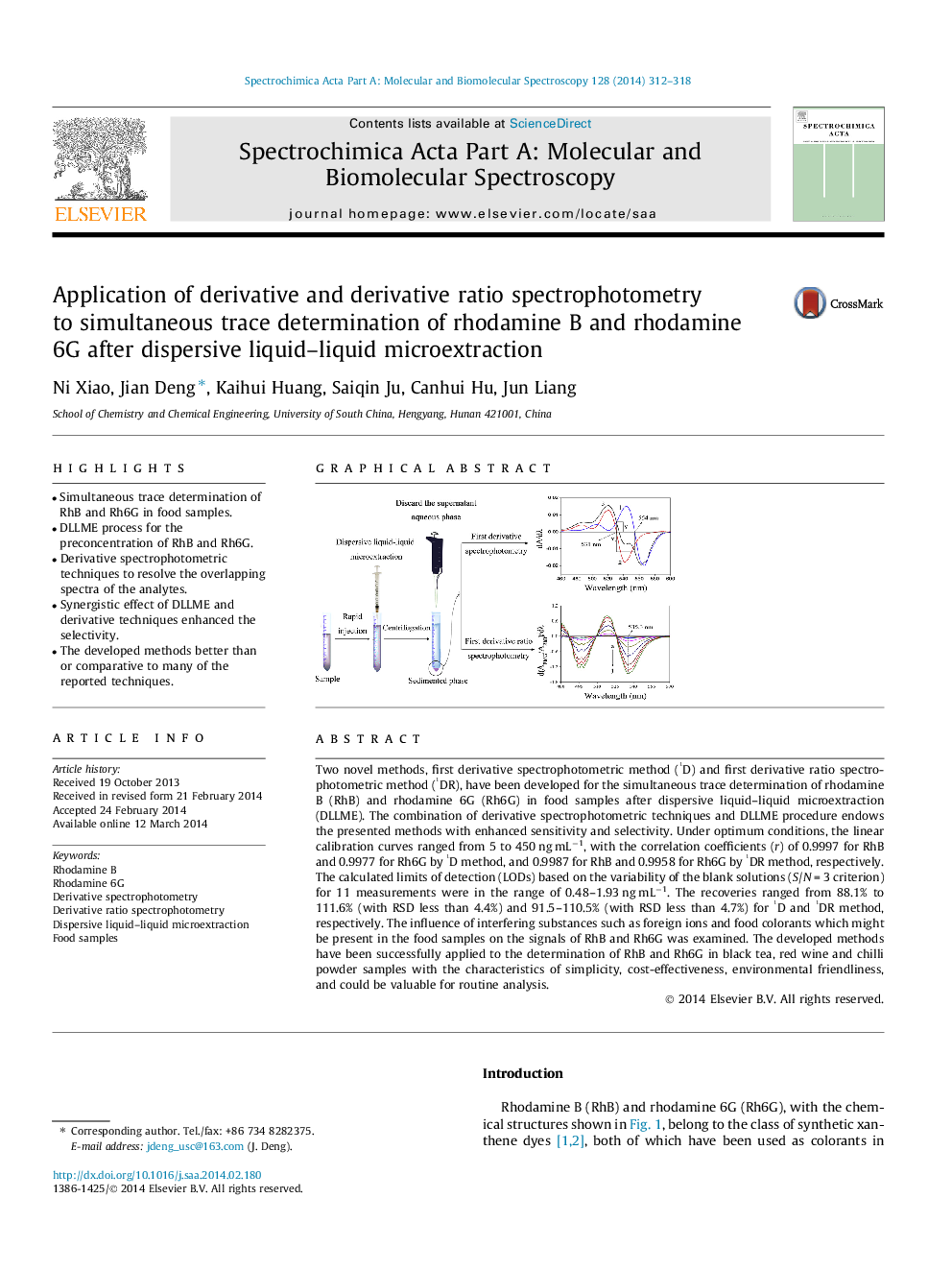| کد مقاله | کد نشریه | سال انتشار | مقاله انگلیسی | نسخه تمام متن |
|---|---|---|---|---|
| 1230576 | 1495240 | 2014 | 7 صفحه PDF | دانلود رایگان |

• Simultaneous trace determination of RhB and Rh6G in food samples.
• DLLME process for the preconcentration of RhB and Rh6G.
• Derivative spectrophotometric techniques to resolve the overlapping spectra of the analytes.
• Synergistic effect of DLLME and derivative techniques enhanced the selectivity.
• The developed methods better than or comparative to many of the reported techniques.
Two novel methods, first derivative spectrophotometric method (1D) and first derivative ratio spectrophotometric method (1DR), have been developed for the simultaneous trace determination of rhodamine B (RhB) and rhodamine 6G (Rh6G) in food samples after dispersive liquid–liquid microextraction (DLLME). The combination of derivative spectrophotometric techniques and DLLME procedure endows the presented methods with enhanced sensitivity and selectivity. Under optimum conditions, the linear calibration curves ranged from 5 to 450 ng mL−1, with the correlation coefficients (r) of 0.9997 for RhB and 0.9977 for Rh6G by 1D method, and 0.9987 for RhB and 0.9958 for Rh6G by 1DR method, respectively. The calculated limits of detection (LODs) based on the variability of the blank solutions (S/N = 3 criterion) for 11 measurements were in the range of 0.48–1.93 ng mL−1. The recoveries ranged from 88.1% to 111.6% (with RSD less than 4.4%) and 91.5–110.5% (with RSD less than 4.7%) for 1D and 1DR method, respectively. The influence of interfering substances such as foreign ions and food colorants which might be present in the food samples on the signals of RhB and Rh6G was examined. The developed methods have been successfully applied to the determination of RhB and Rh6G in black tea, red wine and chilli powder samples with the characteristics of simplicity, cost-effectiveness, environmental friendliness, and could be valuable for routine analysis.
Figure optionsDownload as PowerPoint slide
Journal: Spectrochimica Acta Part A: Molecular and Biomolecular Spectroscopy - Volume 128, 15 July 2014, Pages 312–318